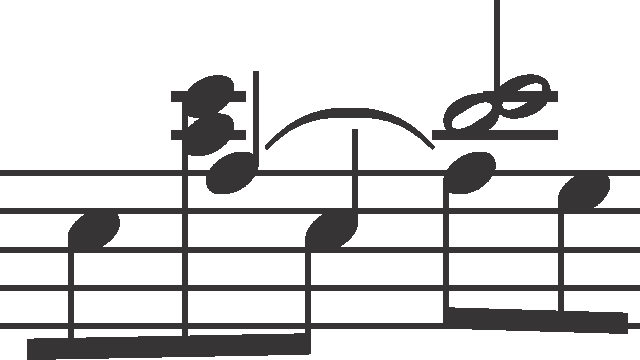



The notation of A may raise certain doubts here: the line combining both a seems to be a tie, which, however, would require the first a
seems to be a tie, which, however, would require the first a to be a crotchet. Chopin may have resigned from a precise notation, since he wanted to avoid deletions or excessive complications:
to be a crotchet. Chopin may have resigned from a precise notation, since he wanted to avoid deletions or excessive complications:  . The notation of A was repeated without changes in all editions (this kind of simplified notation can be found in other pieces by Chopin, in the Polonaise in C minor, Op. 40 No. 2, bars 82 and 109 or in Allegro de Concert, Op. 46, bars 162 and 163).
. The notation of A was repeated without changes in all editions (this kind of simplified notation can be found in other pieces by Chopin, in the Polonaise in C minor, Op. 40 No. 2, bars 82 and 109 or in Allegro de Concert, Op. 46, bars 162 and 163).
Omission of the stem extending e on the 4th quaver is most probably an inaccuracy of the engraver of GE1 (→FE→EE). In GE2 the stem was restored, yet the inaccuracies of notation described above (in spite of introducing a few other arbitrary changes) were not removed.
on the 4th quaver is most probably an inaccuracy of the engraver of GE1 (→FE→EE). In GE2 the stem was restored, yet the inaccuracies of notation described above (in spite of introducing a few other arbitrary changes) were not removed.
Compare the passage in the sources »
category imprint: Differences between sources
issues: Inaccuracies in GE
notation: Rhythm


